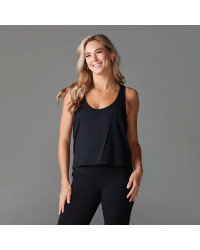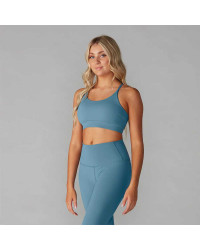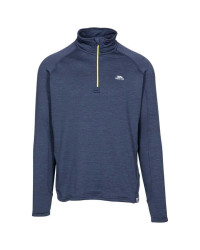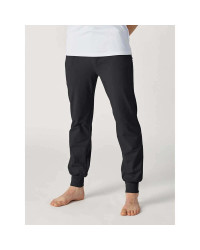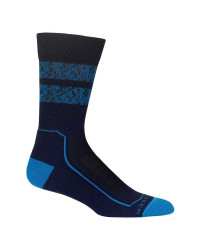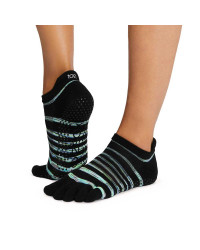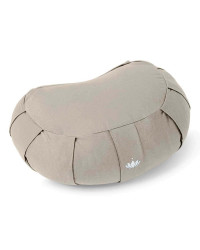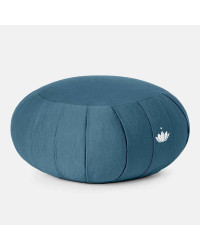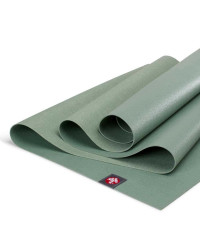We use cookies to make your experience better. To comply with the new e-Privacy directive, we need to ask for your consent to set the cookies. Learn more.
Textile fibers and materials - What kind of clothes do we wear?
Textile materials
It doesn't matter what kind of clothes we wear!
Choose safe, comfortable and sustainable clothing. Follow the principle "Less is more" and contribute to reducing waste and environmental pollution.
Did you know that the textile industry is among the three largest industries in the world? And yes is second in the world in terms of pollution of the environment and consequently us, people?
Materials - table of contents
Every day we buy products that affect the environment. It's time to start choosing more carefully and especially support those who are trying their best for a better world. Vanja Eržen (YogaLine): "It does matter what we wear!"
We are more and more careful about what we eat and what cosmetics we use. How many times do you ask yourself, what kind of clothes do you wear, what do you have on your skin, how was it made and what materials is it made of? That can be another important contribution to a cleaner environment and a better life. But it is also important that we choose clothes that we don't throw away after one season. "It's not okay to buy a shirt just for this summer," says Vanja Eržen.
Do we choose clothes made from safe materials and in a sustainable way?
With a wide range of textile industry and with intensive advertising that invites us in buying new clothes and fashion accessories, it is a challenge to be 'reasonable' and to keep sustainable elements of consumption and modern way of life. Nevertheless, decision for a piece of clothing or footwear should be based on safety, comfort and durability. After all, every step we take is important for sustainability - for us, our descendants and our planet.
During the last 2 decades, the textile industry has undergone many changes. The rapid growth of companies with so-called fast fashion offered cheaper pieces of clothing, accessories and footwear from low quality materials that are accessible to everyone and fashion and style trends that change rapidly. Today we wear wide trousers, tomorrow narrow ones. Yesterday pastel colors were fashionable, today strong fluorescent are. Such clothes usually do not last more than a year due to poor quality, so their remains soon end up in the trash, and from there at the landfills. Where is our responsibility and an industry worth more than 31 billion euros?

Of course, the influence of modern technologies contributes to this; from online shopping to social networks that with video and photo content dictate the 'pace' of fashion. All this completely changed the experience of dressing and shopping.
Monitoring rapid consumption, exploitation of workers in the textile industry and the negative impact on people and the environment, on the other hand, encouraged some companies and individuals to start looking for innovative and sustainable solutions in clothing design - everything from raw material to product and transport route.
They looked back in history; in the use of primary sources of raw materials (e.g. hemp, flax) and they coped with the present - with tons of waste products... which accelerated the industry of reuse of raw materials (e.g. bottles, down, polyester).
Looking into the future went one step further, to the design of innovative, natural, environmentally and people-friendly materials - vegetable fibers (e.g. pineapple leather - Piñatex® from pineapples leaves, sugar cane, hop stalks, quinoa, fibers from various grasses).
By increasing the (use of) naturally renewable resources and by reducing the use of harmful artificial fibers, it might be able to follow the requirements of sustainable development and the new biotextile industry, which combines agriculture, biofuels and biotechnology.
Because our mission is to offer quality and sustainable products, behind which stood caring companies, below you can find a guide to materials or fibers, from whose clothes and accessories from our offer are designed. The materials are carefully and responsibly selected. Preference is given to ecologically certified, biodegradable and recycled materials that are made without cruelty to animals. Manufacturers tend to keep the environment clean and to reduce amount of waste and reuse of plastic, down, polyester, cotton, wool. They act responsibly also with packaging (use of recycled materials, minimal plastic) and transport routes. We believe that awareness and information is the first/important step towards positive change.
Guide to materials and textile fibers

Natural fibers obtained in nature, both in the plant and animal world, have the longest tradition. At the end of the fifties and the beginning of the sixties, however, new synthetic fibers appeared with completely different properties.
Depending on the origin, we distinguish:
1. natural fibers
- cellulose: viscose modal lyocell, copper fibers acetate and triacetate
- synthesized: polyester, polyamide, acrylic, polyvinyl chloride, polypropylene, polyurethane-elastane
2. synthetic fibers
- vegetable: cotton, flax, hemp, jute, ramie, coconut
- animal: sheep's wool, animal hair - goat, rabbit, silk

Natural fibers
Natural fibers are all fibers that are obtained in nature; animal or vegetable origin.
Cotton
Cotton is the most popular fabric in the world. It is made from cotton seeds. It is mostly produced in India. It has many excellent features. Cotton clothes are pleasant to wear, they are light, airy, soft and pleasant to the touch. Cotton absorbs moisture well (up to 21% of its weight), but does not offer high warmth protection. The strength of cotton threads is high, and increases even more when wet. Cotton can withstand high temperatures, so it can be washed, dried and ironed at high temperatures.
Cotton is often mixed with other ingredients - e.g. elastane, linen, polyester to obtain additional properties - elasticity, less wrinkling,...
Due to high consumption worldwide, cotton growers are overusing pesticides, artificial resources in order to achieve the fastest possible growth. Such cultivation pollutes the soil, the environment, and has a negative impact on the health of workers and us who wear such clothing - allergies, hormonal disorders...
Because of the noticeable negative impact, some have returned to natural cotton cultivation; i.e. organic or ecological cotton. The differences are huge; the fibers are cleaner, they are not damaged during picking (manual picking), little water is consumed, clean seeds are used (and not GMO as with regular cotton), the soil for planting is changed and weeds are not removed with chemical compounds, but mechanically. In the production phase, chemicals, heavy metals and chlorine dyes are not used, instead water dyes are used. Organic cotton is softer, more comfortable, hypoallergenic and lasts longer.
When growing organic cotton, the entire production chain is safe for farmers and the environment and preserves the natural ecosystem.


Recycled cotton
Discarded cotton clothes and production residues can be recycled and reused for new fabric. The advantage is economy and less burden on the environment - they no longer need the products paint and chemically process. Unfortunately, fibers can only be 1x recycled.
Kapok
Kapok is a tree and fiber. It is known as silk cotton or Java cotton. The kapok tree is mighty tree, grows up to 60 m tall and has a broad crown, large branches and also large thorns. Wax coating kapok fibers repel water. Even after washing, it returns to its original shape and does not stick together in lumps. It is resilient on mold. Kapok is a natural biodegradable fiber. It is often used to fill soft, plush toys or meditation-pillow.


Hemp
Hemp is a simple and durable plant to grow. It can grow practically anywhere in the world. It requires no pesticides and very little water for growth. It is resistant to heat, mould, pests and light and decay. Hemp is versatile for use – textiles, ropes, building materials, food, cosmetics...
Hemp fabric is softer, warmer, more waterproof and more durable than cotton. The fabric strongly absorbs sweat and other liquids and it removes them from the body extremely well. It is very resistant to temperature. Because of the high level of oxygen in the fabric, the formation of anaerobic bacteria is prevented.
Hemp fabric also uses fewer chemicals for production. Industrial use of hemp on China also goes back 10,000 years. Heating and compressing the hemp fibers can create a building block of material that surpasses wood in strength, quality and cost.
Hemp mixes perfectly with other materials as well; e.g. with organic cotton, recycled polyester, elastane, creating an easy-care, wrinkle-free fabric and wrinkles, like most natural materials (linen). prAna practices this regularly!
The hemp T-shirt does not smell even with heavy sweating due to the high percentage of oxygen in the fabric.
Flax
100% natural plant fiber with a long tradition. It has been in use for about 35,000 years and it was a champion before cotton. The cultivation of the flax plant requires little water and has a low impact on the environment. Linen fabric is biodegradable and suitable for recycling.
The fiber is stiff and inflexible, which makes the fabric characteristically wrinkled and thus creates a unique appearance. Linen clothes are pleasant to wear, soft to the touch, but at the same time extremely durable. They also carry a nice sheen. An excellent fabric for summer days, as it cools pleasantly, quickly absorbs sweat or moisture and quickly releases it. It is anti-bacterial and does not cause allergies. With washing, linen becomes increasingly soft and pleasant to wear.
Wool
A natural fiber obtained by cutting and combing animal hair, whereby sheep hair is most often used, followed by goat hair, rabbits, llamas, alpacas, etc. Wool fibers are the best thermal insulator and are excellent in cold and heat. Due to lanolin - a natural fat, wool does not absorb odor and dirt, but keeps them on the surface. Wool fibers absorb moisture well and we do not have any wet feeling on the skin.
Wool fibers are flexible, elastic, so wool is soft, warm and comfortable or robust and durable. Wool fibers are non-flammable, but have poor resistance to UV rays and insects - e.g. pray. When washing and maintaining wool products, a larger attention is needed.
Wool is named after the type of sheep or animals, for example merino wool or mohair, which we present in more detail below.
Merino wool
Merino sheep, which produce superior wool, live on vast pastures in Australia, New Zealand and Argentina. The ideal climate for top quality. Due to sudden temperature changes and the mountains where sheep live, nature has equipped them with an ideal coat. Merino fibers are fine, soft, extremely absorbent, but still leave a feeling of dryness on the skin. Natural thermoregulating properties of merino wool offer versatile use of clothing in cold and hot days. Sweaty underwear will not leak an unpleasant smell and can be worn for several days in a row, which is special welcome on trips, hiking,... Merino fibers they are non-flammable and are also a natural protection against UV rays. Unlike plain wool it doesn't stain, doesn't itch and is great as a first layer, directly on skin.
Merino wool clothing can be worn in all 4 seasons, as it is a natural regulator temperature. They warm in winter, cool in summer.
Moher
Mohair (mohair) is a natural luxury fiber produced by the Angora goat - originally originating from Turkey, later they also found their place in South Africa and America. Angora goat hair is very soft, long and silky and known for its shine. Although the hair of angora goats has scales like ordinary wool fibers, but these are only indicated and not fully developed. This makes it impossible felt, but these fibers are therefore more durable, antibacterial, more stretchy, more insulating... It is the most durable animal fiber - it is flexible and not rigid, and it can bend and twist without damage. They are usually mixed with other natural or synthetic fibers. Perfect for fine clothes and more demanding use - e.g. socks.
Goose or duck feathers - down
100% natural material with excellent insulating properties. Always popular for fillers for blankets, pillows and winter clothes. Light and soft down offer comfort in use. Due to the popularity and increasing demand, as well as the lack of material due to the bird flu, feathers achieved higher prices, and as a result, the exploitation of animals increased - catastrophic conditions for breeding, forced feeding, plucking of live animals, slaughter...
An alternative to such feathers are recycled feathers; reuse of feathers from disused clothes which get a new utility and, in addition, provide excellent fertilizer! Feathers contain high value of organic nitrogen (the basic building block of plant tissues), so damaged feathers are processed in effective organic fertilizer.
Video demonstration of feather recycling at Lafuma

Synthetic fibers
Artificial fibers are roughly divided into fibers obtained from synthetic polymers and fibers obtained from cellulose. In response to environmental stress, new, sustainable fibers are emerging - tencel, recycled fibers...
1. Synthetic fibers
Synthetic fibers have a similar structure to natural fibers, but their properties are slightly different. Their main advantage is that they hardly wrinkle, do not shrink and are very easy to maintain. Unfortunately, they are often impregnated with chemical substances that can irritate the skin, and they breathe poorly.
Polyester
Polyester is an artificial fiber made from coal, water, petroleum and oils. 63 million tons of polyester is produced annually. 49% of all artificial fibers is polyester. Polyester is mostly used in the textile industry and occupies the highest place among synthetic fibers. The fibers are strong and very flexible, so they hardly wrinkle. Absorbency is very low, resulting in good moisture drainage, quick drying and static material. Compared to natural fibers, polyester breathes poorly, but the advantage is that it does not wrinkle. Polyester fibers are the most resistant synthetic fibers - both chemically and thermally, against UV light and against microorganisms. We mix them with cotton, wool, viscose and other fibers and thus further expand the area of its use. (source: World Meterage)
Recycled polyester
Textiles made of artificial fibers can be even less harmful to the environment to a certain extent - e.g. less water is used than with cotton, but less energy in maintenance. But the biggest problem with these fabrics is microplastics. Microplastics are released into the environment already during the production phase of fabrics, and even more are released during the care phase of clothes. One full washing machine of polyester fabrics in the washing cycle releases 700 thousand microfiber, i.e. fibers that peel off from clothes. Microplastics burdens the environment; scientists estimate that between 1950 and 2016, 5.6 million tons of synthetic microfibers (oceans, seas, dry environments and landfills) has entered the environment.
A step towards reducing the burden on the environment is reuse or polyester recycling - from end-of-life clothes, bottles, waste packaging. Every year a billion bottles can transform into micro granules and then transform into new fibers. PrAna uses REPREVE® fiber in its clothing, which is manufactured according to strict sustainable principles. When you reach for recycled polyester, you positively influence the use of limited resources, the environment and yourself.

In the last 60 years, 5.6 million tons of synthetic microfibers have escaped into the environment.
Recycled polyester - some truths!
Polyester is an artificial fiber made from coal, water, petroleum and oils. 63 million tons of polyester are produced annually. 49% of all artificial fibers is polyester. Polyester is mostly used in the textile industry. When you reach for recycled polyester you positively influence the use of limited resources. Of course, there are still other positive effects on the environment and people involved in the polyester production process.
The formula for success is simple:
- Reduce! (Reduce our dependence on oil. By collecting bottles, contribute to reduction of landfills.)
- Reuse! (Polyester, the bottles are already here. By reusing only these we intervene or we do not exploit valuable natural resources.)
- Recycle! (Polyester can be continuously recycled - recycling without decomposition. This means a closed system - we just reuse it and then again and again and again and again.)
Did you know?
Did you know that you almost certainly have polyester in your dinner? When you use sea salt when preparing food, it probably also contains polyester. A recent study on sea salt found, that 16 global brands of sea salt from more than eight countries contained plastic. Which is nothing unusual, because more than 13 million tons of plastic are "poured" into the ocean annually. For more vivid display - that's more than the mass of 72,000 blue whales!

For a more vivid presentation - this is more than the mass of 72,000 blue whales! Did you know what social impact does waste collection have? A study in cities in Africa, Asia and Latin America showed that for 65% of the participants in the research, the main source of household income is precisely the earnings from waste collection. Another study found that these "waste collectors" cleaned approximately 20% of all waste materials in three of the six cities surveyed.
Therefore, contribute to a better life on this planet. Reach for recycled items and when they have served their purpose, include them again in the recycling process. Let this world of ours spin!
Elastane
Also known as Lycra or Spandex it is known for its exceptional elasticity (extensibility). Elastane is a very strong and durable material, it can stretch and return to its original state again and again. It is resistant to body oils, perspiration, lotions and detergents funds. Popular for blending with natural fibers for maximum comfort, e.g. at sports clothes.
2. Cellulose fibers
Artificial fibers from natural raw materials are obtained from the natural cellulose of various types of wood. Their properties are very similar to natural fibers; they are absorbent, breathable and soft.
Modal
Modal is a fiber obtained from beech or oak wood (regenerated cellulose). The production process is more environmentally friendly and is 100% biodegradable. It is extremely soft, light and flexible fabric, pleasant on the skin and does not shrink during washing. Various brands of modal appear on the market, the leading one being sustainable Lenzing, from Austria (TENCEL™ Modal). Because of its pleasant and sustainable properties , it is definitely the fabric of the present and the future.
Liocell
Liocell or lyocell is a regenerated cellulose fiber from different types of wood - birch, oak and eucalyptus. The manufacturing process includes nanotechnology and is even more environmentally friendly than e.g. viscose, modal, and costs more. It is 100% biodegradable. It has similar features like silk; it is soft, light, breathes well, perfectly absorbs moisture, is anti-bacterial. TENCEL™ Lyocell also comes from Lenzing.

The pioneer among special alternative textile materials is certainly prAna, which from the very beginning "breathes" a sustainable and ecological story. Below we present some of hers parade materials.
Chakara
prAna's most technical product. Products from Chakara material provide the body, the muscles a lot of compression, "support", thereby also providing a visual better body shape. The Chakara material is extremely soft, pleasant to the touch and excellent in contact with the skin, it wicks away moisture (sweat). Extremely durable and maintains its original look even after many washes. (88% Supplex (polyamide)*, 12% Lycra (elastane))
**INVISTA SUPPLEX ® is a fabric, a material that offers the user the feeling of cotton, with advantages of advanced artificial fiber technology. The natural texture of cotton and aesthetics make sure that the fabric is useful in a wide range of clothing. Cotton clothes tend to wrinkle, shrink and often the color of only these fades. INVIST's scientists wanted to offer users advantages, cotton qualities, without bad qualities. That's how they developed SUPPLEX - a fabric that unites traditional qualities, the advantages of cotton and the advanced technology of manufacturing artificial fibers. Supplex fabric feels like cotton, but it breathes perfectly, wicks away sweat, dries quickly, and retains its shape and color.
Supplex fabric has a slogan: »You won't believe it's not cotton!"
Nevaeh
What does it mean if we read the name of the Nevaeh material backwards - heaven - there is a reason for that! Divinely soft, comfortable fabric for the first layer on the skin. A special blend of synthetic fibers and elastane provides the body all the freedom of movement and comfort. For sure, Nevaeh is one of prAna's favorites materials. (87% Polyester / 13% Elastane / Made in USA)
Veda
The Veeda material is very soft and comfortable, it is extremely stretchy. The material is very pleasant, gentle in contact with the skin. It dries quickly, wicks away moisture (sweat) perfectly and is suitable for all sports activities. (45% Spun Recycled Polyester / 45% Spun* Polyester / 10% Elastane / USA). Veeda material can be recycled.
Spun* polyester is 100% polyester; it is important that the fabric or that the yarn is woven into a thread made of several thinner threads, which means that the construction of the thread is quite different than usual, it is kind of "multi-layered". And why is that better; surely such fabric lasts twice as much as ordinary polyester, it does not need to be ironed, it does not shrink, even very frequent washing does not affect it, colors are much more durable, the fabric looks nicer, is more vapor-permeable or it is breathable and feels good on the skin.
Micropoly
This material is very soft, technically perfect, quick drying. Excellent moisture wicking (sweat) and products made of Micropoly material are suitable for all sports activities. To the touch, in contact with the skin, the articles are so pleasant that they quickly became popular. (92% Micropoly (polyester) / 8% elastane / USA)
Bliss
This is one of prAna's most versatile materials. Articles made of Bliss material are suitable for anywhere, whenever and for whatever... The fabric does not wrinkle, is comfortable and very light, has high protection against the sun, against UV rays, UPF* 40+! It is stretchable in 2 directions and thus offers complete freedom of movement. It is water repellent (DWR - Durable Water Repellent) and thus water drops just slide on the surface and do not absorb, but this does not mean that it is impermeable to water or waterproof. (94% Nylon (polyamide) / 6% elastane)
UPF* (Ultra Violet Protection Factor): the skin is protected by a fabric that is made in such a way as to prevent harmful UV rays from reaching the skin. UVA (accelerate skin aging) and UVB rays (cause burns) are problematic for us and, yes, clothing can protect us from them.
Stretch Zion
The Stretch Zion material is the material in which prAna invests the most effort and is the most difficult to produce. This is why the products are so resistant, that at the same time it is their worst feature because we simply cannot destroy them. Therefore, this material is known for its durability and is really almost indestructible. Stretch Zion items can be worn and worn and last and last... The fabric is stretchable in 4 directions and thus provides complete freedom of movement. It is water resistant (DWR - Durable Water Repellent) and therefore drops of water just slide on the surface and are not absorbed, but this does not mean that it is impermeable, i.e. waterproof. (97% Nylon (polyamide) / 3% elastane)
Sutra
It is a classic prAna fabric made from a blend hemp, stretchy Lycra and recycled bottles. It is a soft, light and comfortable fabric, it is stretchable and offers full freedom of movement. (53% Hemp / 44% Recycled Polyester / 3% Lycra). Sutra material can be recycled.
Why is it good to know about certificates and labels on clothes?
Certificates in the field of textiles and the textile industry (from raw materials to the finished product) are certificates of the manufacturer's success in improving materials and production processes, and of protecting human health and the environment. Certificates are issued by the government or private organizations, and all must follow the principle of independence. In the case of textile products and their manufacturers, we can track the certification marks they have received - they can be text or in the form of a logo. Manufacturers can use their own labels to communicate about sustainable, ecological principles or a circular way of working (e.g. LAFUMA; Low Impact label)

Certificates of our brands
GOTS CERTIFICATE
GOTS (global organic textile standard) combines organic and social requirements from the production stage to the final product.
E.g. natural fibers such as cotton, hemp,... are organic only if they are grown in natural environment and NOT with synthetic derivatives. Manufacturers must meet the highest organic textile standards standards and includes all steps from plant cultivation to textile production. Includes relevant working conditions of employees in industry, from field workers to factory workers, and fair pay.
FAIR TRADE CERTIFICATE
FAIR TRADE (fair trade) is an alternative approach common trade. It is based on a partnership between producers and consumers.
Fair trade offers producers a better offer and improved business conditions. This allows them the opportunity to improve their lives and plan for their future. Fair trade offers consumers an effective way to reduce poverty. A Fair trade certified product meets standards that are intended to address power imbalances in trade relations, market instability and the injustice of conventional trade. Individuals are included - for example, farmers, cooperatives, and producers must also invest part of their earnings in the community - education, healthcare...
FSC CERTIFICATE
FSC (Forest Stewardship Council) supports the responsible management of forests around the world.
The standard covers forest management by checking legalities, ensuring long-term social and the economic well-being of forest workers, local communities, respects the rights of indigenous peoples, properly protects endangered areas and reduces the environmental impact of logging,...
BLUESIGN
Bluesign® is a leading organization for a clean environment, human health, production system, management... The Bluesign ® standard means that they are there for everything; materials, the entire production (also consumption of water, energy in production), that is, from the first thread to the final product, strict eco standards are respected, care for the environment and people.
ÖKO-TEX
Öko-Tex is the global association for uniform testing and certification system for textile raw materials, semi-finished products and finished products in all stages of production. They award various standards, the most famous being Made and Green and Standard 100. It is a system of testing harmful and prohibited ingredients (e.g. carcinogenic dyes) or controlled substances by legislation (e.g. formaldehydes, heavy metals), substances that have already been proven to be harmful to health, but are not, according to the law prohibited (e.g. pesticides, dyes that trigger allergies) and other parameters that include safety measures intended to protect health (e.g. pH). Textile products can be certified according to Öko-Tex to standard 100 only if all components meet the required criteria, without exception. Tested textile product or accessory is placed in one of four Oeko-Tex product classes, depending on the intended use of the article. More intensively, the product comes in contact with the skin, it must meet stricter ecological requirements.
FAIR LABOR ASSOCIATION
FLA is an association of universities, civil society organizations and social responsible companies that are aimed at protecting workers and their rights worldwide. They advocate fair and ethical production, systematic and sustainable resolution of labor rights, transparency entire production chain,...
- RESPONSIBLE DOWN STANDARD (RDS) ensures that feathers, obtained in an ethical and sustainable manner.
- RESPONSIBLE WOOL STANDARD (RWS) guarantees that wool fibers obtained in an ethical and sustainable way.
- 5 FREEDOMS OF ANIMAL WELFARE
Commitment to provide all animals with 5 basic freedoms for a normal life (food and water, space, care, respectful attitude, normal development).
THE RESPONSIBLE PACKAGING MOVEMENT (RPM)
The international movement started by prAna with the aim reduction of plastic and other packaging and the use of more effective methods of product packaging. Theirs products have been in special packaging since 2010; the products are rolled using a special system and wrapped in raffia or into other sustainable materials. Since 2010, they have thus reduced packaging by 20 million plastic bags. From the end of 2021, the goal is to provide 100% plastic-free packaging - they will use raffia rolls and bags from VELA paper.

ISO standards
ISO standards are international standards for the quality of business operations of organizations that contribute to a more economical and more flexible organization. ISO 9001 – a quality management standard based on 8 principles (mutual relationship with suppliers, continuous improvement, involvement of people,...) , ISO 14001 - System for effectively reducing the organization's environmental impact. With ISO standard 14001 organizations demonstrate their awareness and environmental responsibility.
The world is your source. Keep it clean.
Wear clothes made of natural fibers at least 1 day a week!
Quite a few of our publications have already been written about natural materials, about sustainable development, about taking care of our planet and taking care of each other.
After all, we have prAna in our offer, which is one of the most conscientious "green" and sustainable textile producers. Their organic cotton, hemp, modal,...other recycled materials.... are famous for comfortable wear and quality. There are also Icebreaker and Odlo - fantastic linen from Merino wool. Alles Mooi with Mohair socks and Merino wool.... Sustainable Lafuma, with a new eco image.... and on and on... In short, our offer is "clean" and you can choose natural fiber clothing from us.
A little to feel - some facts from the video about natural materials:
- The third biggest polluter on the planet is the fashion industry
- On average, we have 5x more clothes than our grandparents
- Vy 2025 we will have on average 10x more clothes than our grandparents - of which 95% artificial fibers
- 300 years ago, 60% of all textiles came from India, which was shrinking under the rule of England. As industry in India systematically closed down, 3 to 4 million people died as a result in the 1950s.
But India still has know-how and experience in textile production. If things were handled wisely, in a natural way, India could once again become a leading force in textile production. Back to roots. Production of textiles from natural fibers! This process must start soon, quickly, because more and more young people are starting other businesses and "old" skills are disappearing. We have to choose clothes ourselves and "tailor" them according to our body. Every body is unique and let's make something that suits us.
This step will allow many farmers to survive.
How can you contribute to a healthy and clean environment? The answers offer themselves!
- Responsible behavior - from purchases to use and waste
- Less is more!
- Quality before quantity!
- Support local and sustainable companies!
- Follow the changes, inform yourself and others - and be an example!
- Donate clothes, shoes, products on!
- Economically handle water, washing, detergents...
- Shop responsibly online - order only the product you really want and reduce the burden of environment with transport, packaging,...
- Follow and support organizations, companies and individuals who truly live sustainably and ethically and not only on paper!




